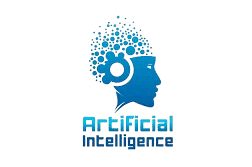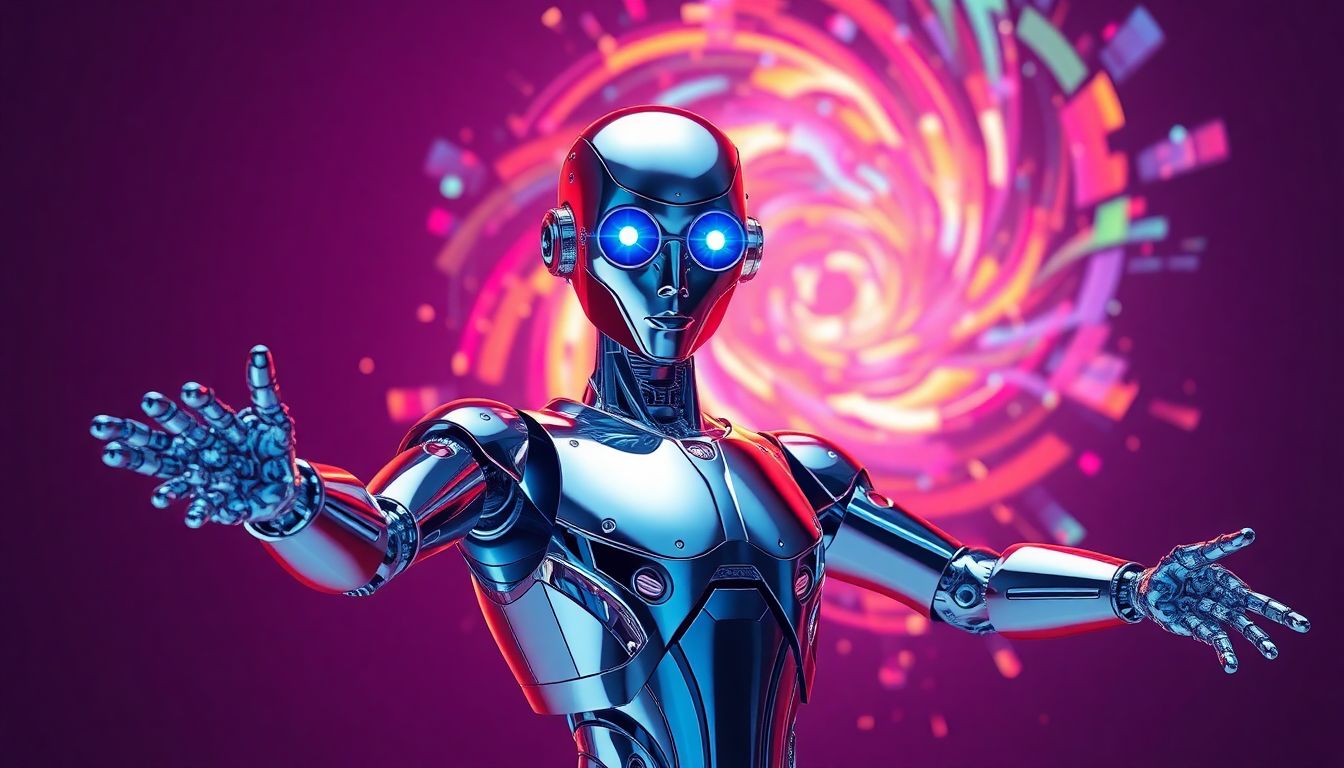Imagine a painting selling for almost half a million dollars—but it wasn’t created by a human, but by an algorithm. While it may sound futuristic, AI artist robots are making waves in the art world.
These robots use AI to create art, from paintings and drawings to sculptures. But are they truly creative, or are they simply mimicking human artists? This article explores the world of AI art, its exciting possibilities, and the ethical questions it raises.
Understanding AI Artistry
AI artistry may seem like magic, but it’s rooted in technology. These robots use sophisticated algorithms to learn and generate art. Let’s break down how it works.
How AI Learns to Create
Machine learning is the key. AI systems are trained on vast datasets of existing art. One common approach is GANs (Generative Adversarial Networks), where one part of the AI creates art and another part critiques it, pushing both to improve. Another method is VAEs (Variational Autoencoders), which learn patterns in art and generate variations. Neural networks, inspired by the human brain, process data to identify patterns and create connections, enabling the AI to “understand” art.
AI Art Robots and Platforms
There are numerous AI art tools available today. DALL-E 2 generates images based on text prompts, while Midjourney produces surreal, dreamlike visuals. Stable Diffusion, an open-source platform, allows users to modify and experiment with AI art. These tools have democratized art creation, making it accessible to anyone, regardless of technical skill.
The Creative Process of an AI
AI art creation differs from human artistry. An AI requires prompts—textual descriptions of what to create. It then uses these prompts to generate ideas and tweak parameters like color and style. While human artists rely on skill, emotion, and intent, AI relies on data and algorithms. Both produce art, but their creative processes are fundamentally different.
The Impact on the Art World
AI-generated art is transforming how art is created and experienced. But is this impact positive, negative, or a mix of both? Let’s explore.
Democratization of Art Creation
AI tools allow anyone to create art without years of training or technical skill. Simply type a prompt, and the AI does the rest. This accessibility empowers more people to express themselves creatively. However, it also raises questions about what it means to be an artist and the value of human-made art.
Emerging Modes of Artistic Collaboration
Artists are increasingly using AI as a collaborator. They generate ideas with AI, refine its outputs, and create unique works. AI can also automate repetitive tasks, freeing artists to focus on creative decisions. In this way, AI becomes a tool, much like a brush or chisel, enhancing human creativity.
Disruption of Conventional Art Markets
The rise of AI art raises questions about the value of human-made art. If AI can easily produce art, will human creations lose their worth? Copyright is another issue—who owns AI-generated art? Is it the user, the developer, or the AI itself? These legal and economic questions remain unresolved.
Ethical and Philosophical Considerations
AI art sparks profound ethical and philosophical debates. What is creativity? Can a machine be creative? These questions are not easy to answer.
Creativity and Authorship
Can a robot be creative? Some argue that AI merely follows instructions and lacks intent or emotion. Others point to the surprising originality of AI-generated art. Similarly, authorship is a contentious issue. If an AI creates art, who is the true author—the user, the programmer, or the AI itself?
AI Art, Bias, and Representation
AI learns from data, and if that data is biased, so is the AI. For example, if an AI is trained predominantly on art by male artists, it may struggle to produce works reflective of other perspectives. Ensuring diverse datasets is crucial to promoting fair and equitable representation in AI art.
The Future of Art and Humanity
Will AI replace human artists? Probably not. Instead, AI will likely transform the art world, expanding the creative possibilities for humans. The future of art may lie in collaboration, with AI and humans working side by side to push the boundaries of creativity.
Case Studies of AI Art Robots in the Wild
AI art isn’t confined to galleries—it’s being used across industries. Here are some examples:
AI in Design and Advertising
AI creates marketing visuals, aids in product design, and streamlines advertising campaigns. It can generate dozens of design iterations, allowing companies to choose the best option. AI also personalizes ads, making them more relevant to consumers.
Entertainment and Gaming
AI is used to design game levels, create special effects for movies, and develop interactive art installations. It can generate textures, models, and realistic effects, saving time and money in the entertainment industry.
Therapeutic and Educational AI Tools
AI can assist in art therapy, helping individuals express themselves. It also serves as an educational tool, teaching students about art and encouraging creative exploration. By making art more accessible, AI opens new avenues for self-expression.
Getting Started with AI Art
Interested in creating your own AI art? Here’s how to get started:
Choosing the Right AI Art Generator
Consider your goals and skill level. DALL-E 2 is user-friendly and great for beginners. Midjourney excels at artistic styles, while Stable Diffusion offers more control but requires technical knowledge. Also, consider costs—some platforms are free, while others require subscriptions.
Crafting Effective Prompts
The prompt is key to generating compelling AI art. Be clear and specific, using descriptive language. Experiment with different phrases and artistic styles, such as “a cat in the style of Van Gogh.” Unlikely pairings can lead to extraordinary results.
Refining and Customizing AI-Generated Art
AI art is a starting point. Use editing tools to adjust colors, contrast, and details. Programs like Photoshop can help you refine the output and make it uniquely yours.
Conclusion
AI artist robots are revolutionizing the art world, offering new opportunities and raising important questions. They democratize art creation and enable innovative collaborations, but they also challenge traditional notions of creativity and authorship.
The future of art likely lies in human-AI collaboration, a partnership with thrilling potential. As AI continues to evolve, it will undoubtedly reshape the creative landscape in ways we are only beginning to imagine.

